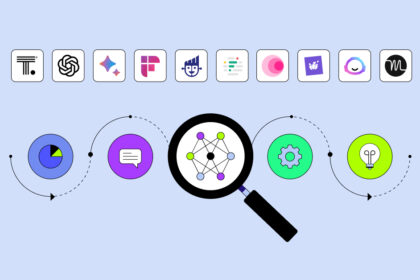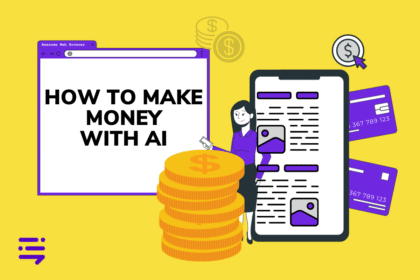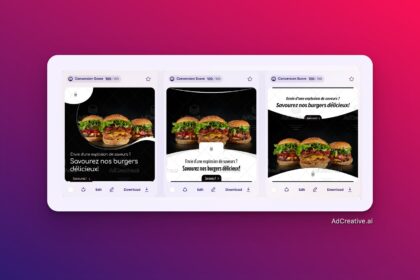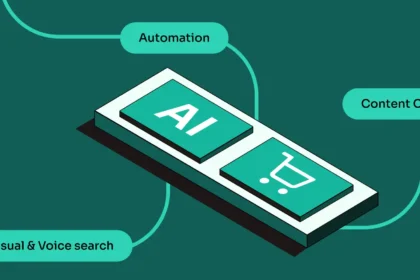The freelance economy is more active than ever. Remote work has become a major source of income for millions of people thanks to sites like Upwork, Fiverr, Toptal, and Freelancer.com, which connect people with clients all over the world. But artificial intelligence (AI) is what really changes the game in this area. Freelancers who have the right AI tools are finishing projects faster, with better quality, and charging more for their work.
AI for freelancers isn’t just a fad; it’s a change in the way independent workers work, make things, and grow that will last for a long time. Using AI can greatly increase your productivity and profits, whether you’re a writer, designer, marketer, developer, or virtual assistant.
In this detailed guide, we’ll look at how freelancers can use AI tools in all kinds of fields to improve their services and build long-lasting careers with smart automation and machine learning.
Chapter 1: How AI Will Change the Game for Freelancers

1.1 Productivity and Time Efficiency
A freelancer’s most valuable resource is time. AI tools can automate repetitive tasks such as data entry, transcription, image resizing, proofreading, and scheduling. Freelancers can focus on strategic work or take on more clients when they have more free time.
1.2 Better Quality Work
A lot of AI tools work with you to come up with ideas, fix grammar, make visuals better, and look at data. This leads to better work being done more quickly, which is often more than what the client expected.
1.3 Advantage over the Competition
Freelancers who use AI are unique. They can offer high-end services that many competitors don’t yet offer, like AI-powered content writing or design mockups, by adding smart tools to their workflows.
Chapter 2: The Best AI Tools for Freelancers, by Type
Let’s look at the best AI tools that freelancers in different fields can use.
2.1 AI for Writers and People Who Make Content
- Jasper, Claude, and ChatGPT: Make outlines, blog posts, scripts, and emails.
- Grammarly and ProWritingAid: Help you improve your grammar and style.
- SurferSEO and NeuronWriter: Help you make your content better for search engines.
- Notion AI: Can help you with research summaries, outlines, and content ideas.
Use case: A freelance blog writer can write long, SEO-friendly posts three times faster by using AI to help them outline, draft, and edit.

2.2 AI for Designers
- Canva AI and Adobe Firefly: Make design templates, remove backgrounds, and automatically resize assets.
- DALL·E, Leonardo, and Midjourney.Ai: Make pictures or other visual assets with AI.
- Khroma and Looka: Can help you design your brand and color palette.
Use case: A freelance logo designer can quickly pitch five AI-generated mockups and then improve the best one.
2.3 AI for Programmers and Developers
- GitHub Copilot and Codeium: Tools for code completion, debugging, and suggestions.
- Replit Ghostwriter: An AI tool that helps you pair program.
- Tabnine: An AI tool that helps you finish your code.
Example: AI can take care of repetitive or boilerplate code so that a freelance app developer can write clean code faster.
2.4 AI for SEO and Marketing Experts
- Copy.ai and Writesonic: Write captions for social media, product descriptions, and emails.
- SurferSEO and Frase.io: Tools for optimizing on-page SEO and analyzing content.
- Ocoya and Predis.ai: Help you design and schedule AI social media posts.
Use case: A freelance digital marketer can use automated captions, images, and hashtags to run several content calendars at once.
2.5 AI for Admins and Virtual Assistants
- Motion, Clockwise: AI-powered tools for planning and managing tasks.
- Otter.ai and Fireflies.ai: Can write down and summarize meetings.
- Zapier and AI plugins: Help you automate things like answering emails, entering data, and updating your CRM.
Use case: With smart workflows and automated meeting summaries, a virtual assistant can handle twice as many clients.
Chapter 3: What Freelancers Need to Know to Work Well with AI
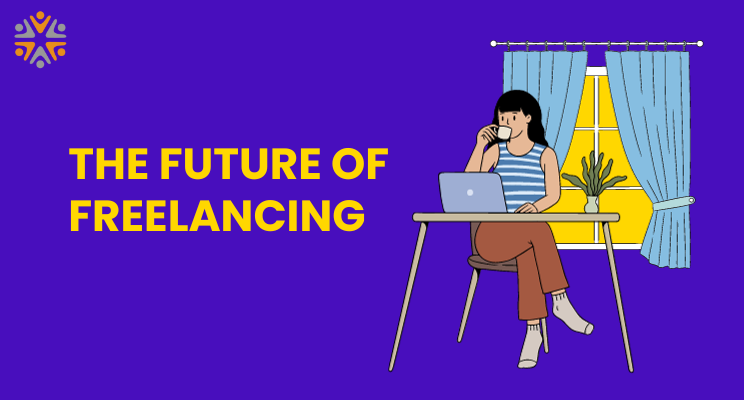
AI doesn’t get rid of the need for skill; it makes it more important. This is how freelancers should change:
3.1 Learn How to Write Prompts
It’s very important to learn how to “talk” to AI. AI tools like ChatGPT and Midjourney work better when you give them good prompts. Writers, designers, and developers will find this very helpful.
3.2 Mix the Creativity of People with the Speed of Machines
AI helps, but it doesn’t replace the creative spark. Clients pay for your unique voice, style, and way of solving problems. Mix it with AI to make your impact bigger.
3.3 Keep Up with Updates to Your Tools
AI tools change quickly. To stay ahead, watch YouTube tutorials, sign up for newsletters, and join AI communities on sites like Reddit, Product Hunt, or Discord.
Chapter 4: How to Provide Services with AI
You don’t just use AI behind the scenes; you can also market your services as AI-enhanced and charge more.
4.1 Sample Gig Titles for Freelancers
- “Blog Writing with AI for SEO Growth”
- “Visual Ideas for Branding Made by Midjourney”
- “App Development with AI: Quick, Easy, and Bug-Free”
- “Email marketing sequences that run on their own with AI copywriting”
4.2 Create a Brand for a Specific Market
Choose a specialty. Be a “AI-enhanced SaaS content writer” instead of a “content writer.” Be a “AI-backed productivity VA for busy entrepreneurs” instead of a “virtual assistant.”
4.3 Tell Clients About the Benefits of AI
Teach your customers how to use your tools. Show them how AI helps you get things done faster or better at analyzing data. This helps you explain your prices and gain trust.
Chapter 5: How to Find Freelance Work That Values AI
5.1 Use Freelance Marketplaces
Look for words like:
- “AI content”
- “Designer for Midjourney”
- “Expert in automation”
- “Writing blogs with AI”
There are now whole categories for AI services on sites like Upwork and Fiverr.
5.2 Examples of AI in Cold Outreach
Send cold emails or DMs to show how AI helped you improve your work in the past (for example, “AI helped this article rank in three weeks”).
5.3 Make a Portfolio with Projects That Use AI
Make a strong portfolio that is easy to see. Add case studies, examples of what your AI workflows look like before and after, and screen recordings of them. You can make a simple portfolio site with Notion or Carrd.
Chapter 6: Long-Term Plans for Making Money as a Freelance AI Worker
6.1 Turn Your Services into Products
Make your work into assets that can be scaled. For example:
- AI prompt packs for writers
- Notion templates to help you get things done
- Packs of graphics for Midjourney
You make them once and sell them over and over again on your site, Gumroad, or Etsy.
6.2 Make eBooks or Online Courses
Show other people how to use AI in your field. For example, “How I Use AI to Write 10 Blog Posts a Week” or “AI for Designers: Midjourney & Canva Workflow.”
6.3 Create a Brand for Yourself
You could make a YouTube channel, podcast, or blog about your journey as a freelance worker who uses AI. Over time, this brings in better clients, partners, and passive income.
Chapter 7: Problems and Morality in AI for Freelancers
7.1 Putting Too Much Faith in AI
When you automate too much, the quality or originality may go down. Always speak up, check your facts, and keep the human touch alive.
7.2 Being Open with Clients
If you use AI, be honest with your clients. A lot of people like it if it makes things better and faster, but some businesses may not allow it.
7.3 Too Many Jobs and Copying
AI makes audience members more likely to steal ideas. Work on creating a brand and reputation that are hard to copy.
Chapter 8: Stories of Success in the Real World
Case Study 1: Writer Using ChatGPT + SurferSEO
Freelancer James used ChatGPT to plan out articles and SurferSEO to make them better. He went from writing three posts a week to ten, got twice as many clients, and raised his prices.
Case Study 2: Designer Using Midjourney Mockups
Lina, a graphic designer, began making mood boards with AI using Midjourney. Clients loved how quickly ideas came up, and they paid extra for quick changes.
Case Study 3: A Virtual Assistant Using Fireflies.ai and Zapier
Sarah set up automatic notes and follow-ups for her clients’ meetings. She took care of six clients at once and only spent four hours a day actively managing tasks.
Conclusion
The future of freelancing will be better with AI. Freelancing will never be the same, and that’s a good thing.
AI for freelancers doesn’t take away skills; it gives them more. AI can help you work smarter, faster, and make more money, whether you make content, develop software, market things, or help others.
The people who adapt to new tools the fastest will get the most out of them. Make systems, make things, and keep learning. The future of freelancing is for people who work with machines, not against them.
Don’t Miss:






